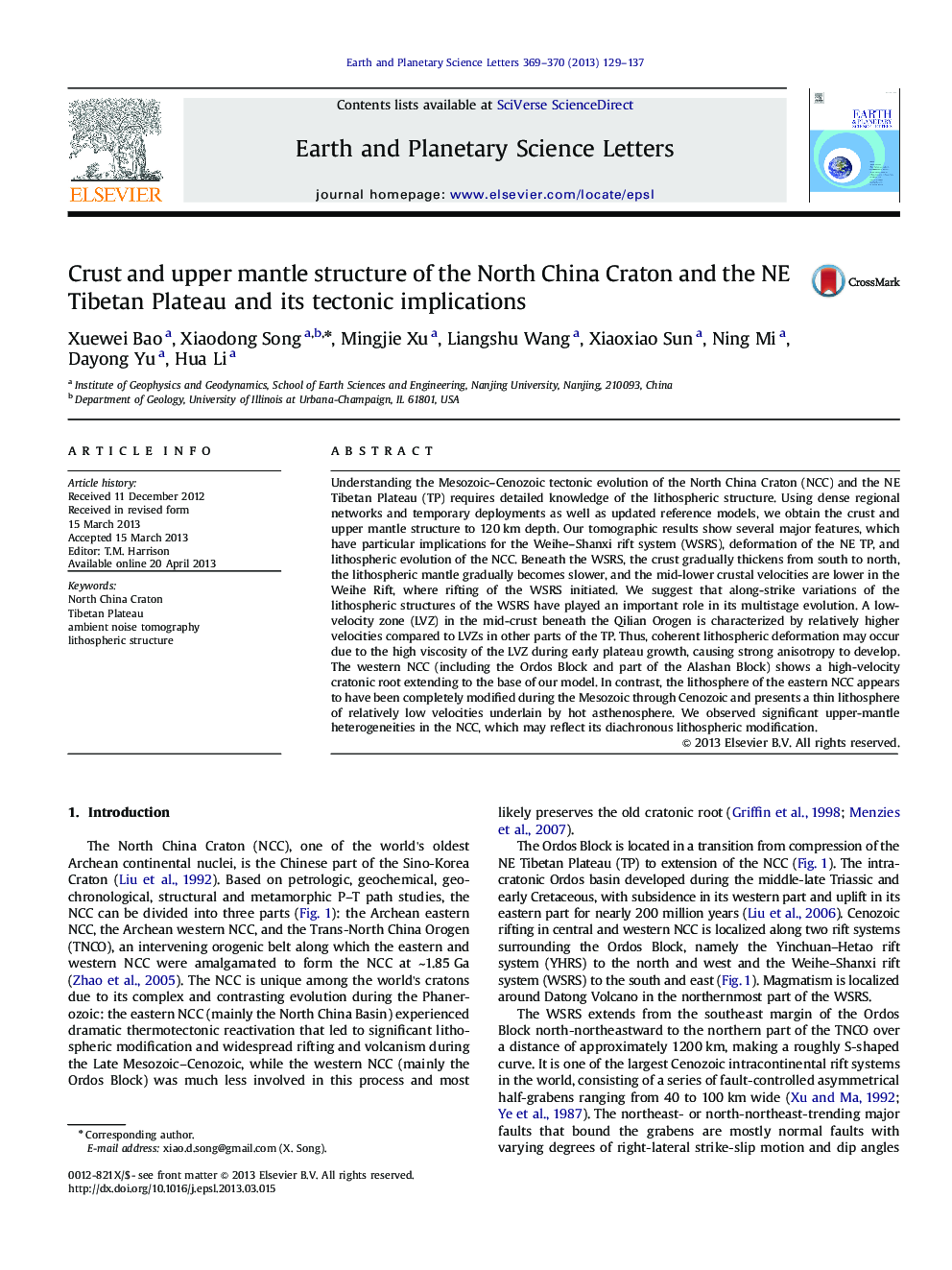| کد مقاله | کد نشریه | سال انتشار | مقاله انگلیسی | نسخه تمام متن |
|---|---|---|---|---|
| 4677099 | 1634784 | 2013 | 9 صفحه PDF | دانلود رایگان |
• Use of unprecedented amount of seismic data, including dense regional networks.
• Combine ambient noise and earthquake data from recent national models.
• The initiation of the Weihe–Shanxi Rift is controlled by the deformation of the Tibetan Plateau.
• Isolated mid-crust low velocity zone in Qilian Shan may reconcile vertically coherent deformation model.
• Significant upper-mantle heterogeneities are revealed in North China.
Understanding the Mesozoic–Cenozoic tectonic evolution of the North China Craton (NCC) and the NE Tibetan Plateau (TP) requires detailed knowledge of the lithospheric structure. Using dense regional networks and temporary deployments as well as updated reference models, we obtain the crust and upper mantle structure to 120 km depth. Our tomographic results show several major features, which have particular implications for the Weihe–Shanxi rift system (WSRS), deformation of the NE TP, and lithospheric evolution of the NCC. Beneath the WSRS, the crust gradually thickens from south to north, the lithospheric mantle gradually becomes slower, and the mid-lower crustal velocities are lower in the Weihe Rift, where rifting of the WSRS initiated. We suggest that along-strike variations of the lithospheric structures of the WSRS have played an important role in its multistage evolution. A low-velocity zone (LVZ) in the mid-crust beneath the Qilian Orogen is characterized by relatively higher velocities compared to LVZs in other parts of the TP. Thus, coherent lithospheric deformation may occur due to the high viscosity of the LVZ during early plateau growth, causing strong anisotropy to develop. The western NCC (including the Ordos Block and part of the Alashan Block) shows a high-velocity cratonic root extending to the base of our model. In contrast, the lithosphere of the eastern NCC appears to have been completely modified during the Mesozoic through Cenozoic and presents a thin lithosphere of relatively low velocities underlain by hot asthenosphere. We observed significant upper-mantle heterogeneities in the NCC, which may reflect its diachronous lithospheric modification.
Journal: Earth and Planetary Science Letters - Volumes 369–370, May 2013, Pages 129–137
